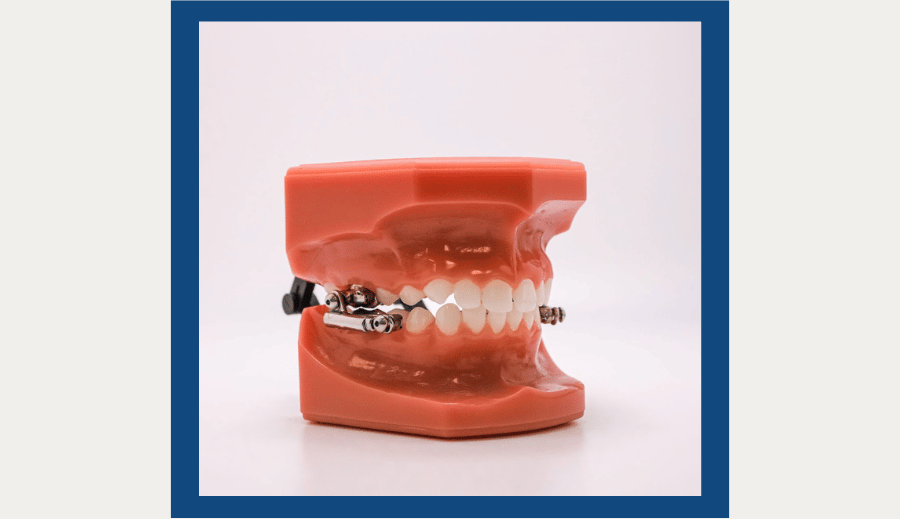
Background
The Herbst appliance is used primarily for dentoskeletal Class II correction. It is widely used in orthodontics because of its proven effectiveness. It can be used as a stand-alone appliance, e.g., Phase I interceptive treatment, or in combination with comprehensive fixed appliance therapy.
The Herbst appliance is named after Dr. Emil Herbst, a German orthodontist who developed the appliance in 1904. Little information is found in the literature for the next 75 years. Hans Pancherz then reintroduced the appliance to the orthodontic profession when studying and teaching orthodontics in Malmo, Sweden. He was considered the greatest authority on the Herbst appliance up until his death in March 2023.
He followed patients treated with the Herbst appliance for more than 30 years after treatment, a rare accomplishment in orthodontic research, providing a wealth of clinically relevant information and a detailed understanding of the treatment effects.
Function & Mechanism of the Herbst Appliance
The contemporary Herbst appliance consists of bilateral telescoping mechanisms that are positioned on the buccal surface of the posterior teeth, connecting from the maxillary molar area to the mandibular premolar region. Upper and lower fixed appliances generally support the telescoping mechanism, obligating the patient to posture their mandible forward.
For example, a maxillary expander can be combined with a mandibular lingual arch. The Herbst appliance is constructed with the mandible advanced to a position prescribed by the clinician. It is not uncommon to advance the mandible initially to Class I canine occlusion. Other practitioners may request an edge-to-edge incisor relationship, a common variation. Subsequent advancements can be made easily by placing advancement shims on the most anterior component of the telescoping mechanism. This is generally necessary once or twice during Herbst appliance treatment.
Distalization of the maxillary molars can be a side effect of treatment and negate a small amount of the initial magnitude of mandibular advancement, temporarily resulting in an increase in overjet. This is one reason for the need for subsequent advancement during treatment. Advancement may also be ideal for fine-tuning of the midline, overjet, and canine relationship over the treatment time.

Treatment Effects
By positioning the mandible forward with the fixed Herbst appliance in growing patients, Pancherz documented mandibular growth and inhibition of maxillary growth. This is referred to as the headgear effect.
The maxillary dentition receives a distalizing force, while the mandibular dentition experiences reciprocal anterior force. Expression of the dentitional change can be minimized with variations in appliance design.
Pancherz also revealed the potential for remodeling in the area of the temporomandibular joint. He advocated using the appliance primarily in growing patients to promote differential growth of the Class II skeleton. Corrective treatment is best in subjects with a brachyfacial growth pattern.
Unfavorable vertical growth, unstable occlusal conditions, and persistent oral habits after treatment are potential risk factors for stability of Class II correction. Generally, the Herbst appliance promotes quicker results than other treatments aimed at Class II correction because of forced compliance and full-time wear.
This makes it a popular choice for patients who want fast, effective treatment results without the need for headgear. The extraoral headgear is obviously visible, can be uncomfortable, and inconvenient. Most importantly, clinicians cannot expect anything close to full-time wear.
Benefits
Many patients have both skeletal and dental discrepancies that cannot be corrected with braces or aligners alone. The Herbst appliance is arguably the most predictable and efficient adjunctive appliance for dentoskeletal Class II correction.
It has also been thoroughly studied over the long term and its effects are well documented in the orthodontic literature. Wearing the appliance is relatively discreet, requires minimal adjustments, and is generally removed only once at the conclusion of Class II correction.
A typical Class II discrepancy can be corrected in approximately nine months, more or less based on the magnitude of the Class II problem and treatment timing. Current and variable designs of the Herbst appliance are durable, whether using orthodontic bands, stainless steel crowns, or printed appliances.
Disadvantages
Like other orthodontic appliances, there is normally an adjustment period following placement of the Herbst appliance. Pain is not a typical reported side effect; inconvenience is the most common complaint. Initially, the patient reports difficulty primarily with eating, and secondarily with speaking.
The majority of patients fully adjust within one week. Hard and sticky foods should be avoided, no different than other appliances or braces. Good oral hygiene must be maintained to avoid dental decay and periodontal problems. This task can be accomplished easily with professional instruction but is more difficult and time consuming with the additional hardware in the mouth.
Patients wearing a Herbst appliance should see their orthodontist every few months to confirm there is no breakage, the telescoping mechanism is moving freely, and to make any adjustments as needed.
Conclusion
The Herbst appliance is a valuable tool in orthodontics for predictable and time-efficient Class II correction. Its treatment effects are well documented. Although there is a learning curve for the doctor and an adjustment period for the patient, the advantages of the Herbst appliance greatly outweigh the disadvantages.
Full time wear of this fixed functional appliance in a growing patient eliminates the need for patient cooperation, making it a leading choice for Class II correction.

